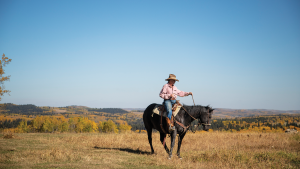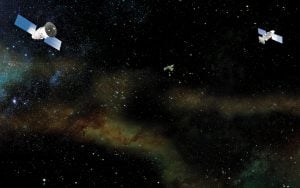Scientists in Alberta are using a novel method to study cow burps—which contain a potent greenhouse gas called methane—with the goal of reducing emissions and making the agriculture industry more sustainable.
While feed efficiency—using less feed for the same amount of food production—has been studied for decades, methane emissions research is fairly new, and the end goal is to be able to genetically select for cattle that are both feed-efficient and produce less methane.
“Right now we are still in the beginning stages,” says John Basarab, a research scientist with Alberta Agriculture and Forestry at the Lacombe research centre and a professor at the University of Alberta. “This research isn’t going to stop global warming; it’s really more about responsible, sustainable food production and the efficient use of resources.”
In the past, cattle were put in closed chambers to measure methane emissions. Although precise, this method is very expensive and interferes with the animal’s natural behaviour, says Basarab.
Instead, his research team has employed a new tool, a feeder he describes as a fume hood on wheels. The cows are coaxed into the feeder with the promise of food pellets, and the methane they release through respiration and burping is measured by a small sampling device that analyzes gas emissions in realtime. A laser set up around the pasture also takes measurements 24/7.
“What’s new here is that no one has really been able to measure methane in cattle under their normal conditions at a large scale, quickly and cheaply,” says Basarab.
As the food industry responds to demand for more sustainable practices, Basarab says the future of feed efficiency and methane reduction studies won’t just be focused on beef cattle.
The dairy industry is already following suit, with Genome Canada funding a research project aimed at improving feed efficiency and reducing methane emissions in dairy cattle.





